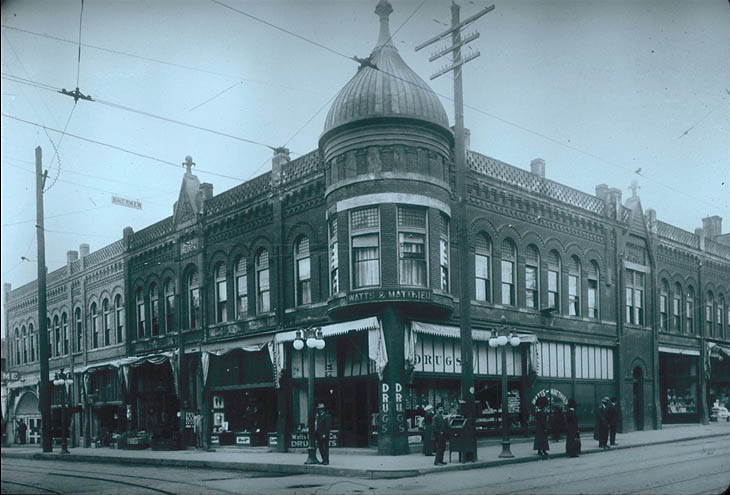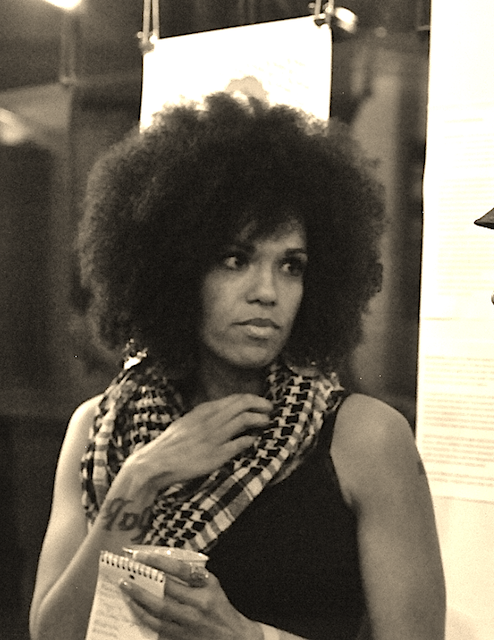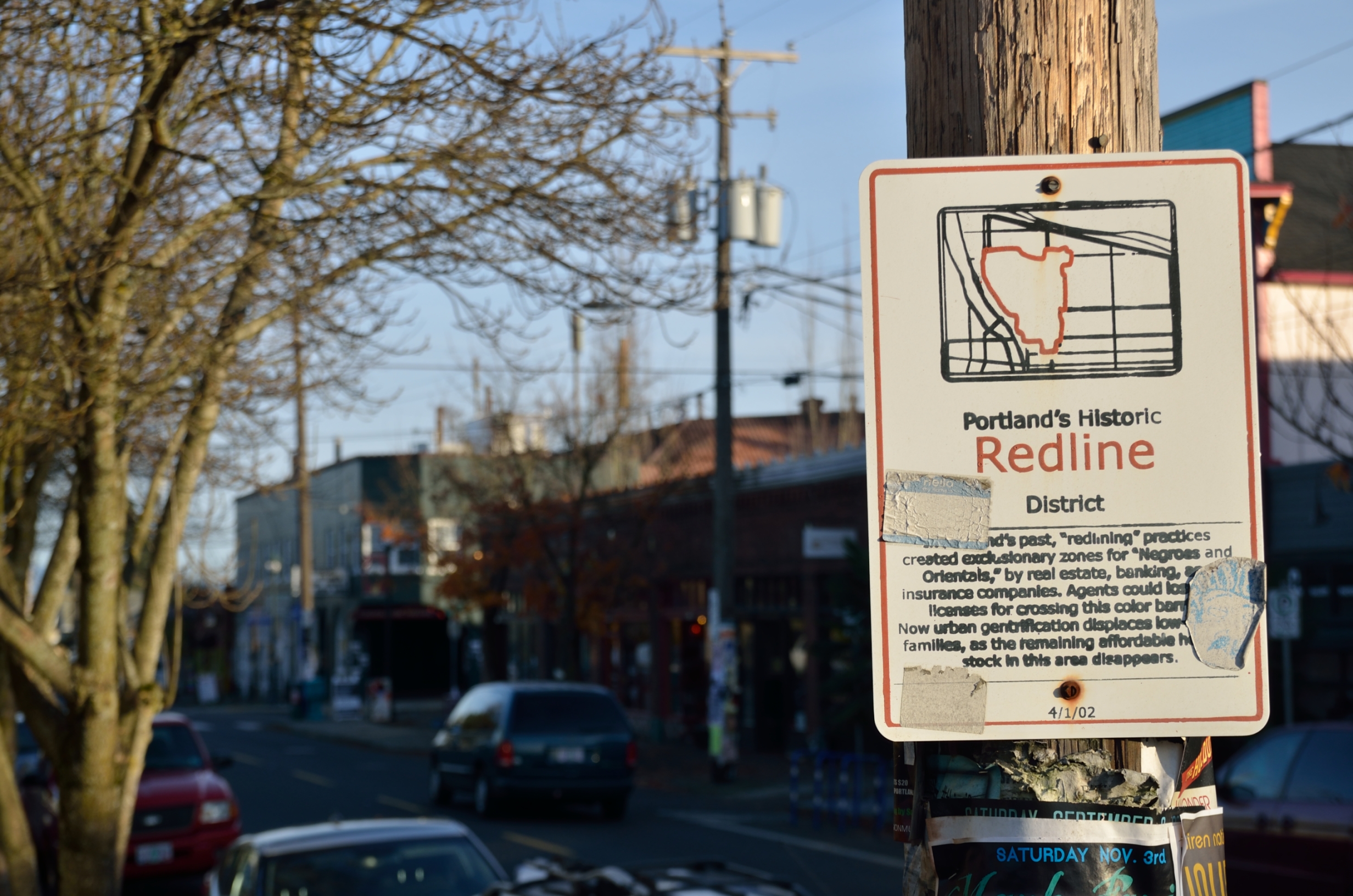Story by Pete Shaw
“When is history not history?” asks Walidah Imarisha, at a recent Why Aren’t There More Black People in Oregon? presentation sponsored by the Oregon Humanities Conversation Project. Imarisha, a Portland State University and Oregon State University instructor, poses the question to our group after we have spent 90 minutes examining, wrestling with and, mostly importantly, discussing with one another the history of black people and black communities in Oregon. The question is imposing – forcing us to look to the past and present for answers, and demand an honest reckoning for the future.
There are small posters on the walls of our conference room in the Midland Branch of the Multnomah County Library, forming a timeline of history ostensibly relating to black Oregonians. On one, there is a picture of Marcus Lopes, the first person of African descent in Oregon. Another item features Alonzo Tucker, a black man who was lynched in Coos Bay. A local newspaper described the lynch mob as “quiet and orderly” and found the lynching was not an “unnecessary disturbance of the peace.”
Time may move along, but progress can seem frozen in its eddies. A law prohibiting black people from voting remained in the state constitution until 1927. A connection to the Confederacy with a law prohibiting interracial marriages, only repealed in 1951. An item about Legacy Emanuel’s 1970 expansion that ripped a hole in the Albina neighborhood, after the project lay stagnant for nearly two decades resulting in vacant lots and boarded up buildings. It is still being completed. A photo of Mulugeta Seraw, the Ethiopian graduate student and father beaten to death by two skinheads in 1988. Laws, events, customs–all the stuff not just of history, but also of resistance, achievement, and ultimately, survival.
In 1844, pre-state Oregon declared slavery illegal. But making slavery against the law and embracing a diverse society are two different items, and from its beginnings Oregon was modeled as a white homeland. That same 1844 law ordered all black people out of the Oregon Territory under threat of lashing. This “Lash Law” mandated black people be publicly flogged every six months; however, before it could be enforced, it was modified and the whippings were replaced with forced labor.
In 1849 another law excluded any more blacks from settling in the territory. The passing of the Oregon Donation Land Act of 1850, granted free land to Whites only. The 1859 constitution included in its Bill of Rights a racial exclusion clause banning black people from emigrating to Oregon, as well as prohibiting them from owning land and entering into contracts. Although the 14th and 15th Amendments to the United States Constitution rendered such exclusion illegal, it wasn’t until the 1920s that the ban was officially repealed from Oregon’s constitution.
This history, hardly exhaustive, is the substrate of the state of Oregon, and yet it tends to be seldom acknowledged, and, when recognized, usually depicted as an artifact of the past. This is one point where history is not history – when events are isolated, ignored, or otherwise relegated to a sphere where that is rarely discussed and where the societal effects of that history dwell without context. When you digest and discuss all those images and descriptions on the wall – as Imarisha encourages you to do with people whom you do not know – a narrative emerges. These snapshots that unto themselves seem aberrant, the work of vile individuals or groups, such as the Ku Klux Klan, start running together, becoming a movie with obvious currents that formed with the state and flow into the present.
Measure 11, establishing mandatory minimum sentencing for several crimes, was passed 150 years after that first exclusion law. It applies to all defendants over 15 years old and require the accused of the listed crimes be tried as adults. Despite making up only 4 percent of Oregon’s youth population, black youth account for 19 percent of Measure 11 indictments. It seems William Faulkner was right: the past isn’t even past.
But if our state story reveals some of the horrific and disgusting acts committed, laws promulgated, and customs enforced, it also depicts acts of resistance that in themselves form a narrative. Resistance is a slippery concept, for its successes may come incrementally and some seem nothing more than drops upon a toxic pool.

The Hazlewood Building on Weidler near the Memorial Coliseum used to be home to Dude Ranch, a jazz club. It is the only remaining building of the approximately ten jazz clubs that were destroyed to make room for the Memorial Coliseum and the interstate freeway. Photo by Pete Shaw.
For example, in Bend in 1925 there was a sign that read, “We Cater To White Trade Only.” The black community in Bend, already aware of the local restaurants in which they were unwelcome, protested the sign. The city council agreed to remove it and similar Jim Crow signs, with the expectation that black people would now police themselves. Though the victory may seem Pyrrhic, it was an important step for those forced to daily encounter the signs and be reminded of the ways in which they were unwanted. It took thousands of these small largely unknown victories, won by tens of thousands of people you and I will never know, that ultimately led to the Civil Rights Act of 1964.
Many of the institutions that shape our lives today are rooted in the Oregon constitution, and the legacy of the exclusion clause can be seen by observing where those institutions grant favor. One of the most glaring examples lies in housing and development. For the black community in Oregon, it has often been a history of taking and denial. Since homeownership is a foundation of generational wealth development, it becomes clear that Oregon’s black community is being denied an opportunity to develop wealth.
The places where black people could own property were limited through extra-legal means, such as The Portland Real Estate Code of Ethics (1919), which mandated real estate agents refuse to sell to people whose race would “be determined to lower property values in that neighborhood.” During World War II, over 13,000 black people moved to Vanport to build ships for Kaiser – a sixfold increase in the number of black people in Oregon. The Vanport flood of 1948 forced integration on Portland, as black survivors moved a couple of miles north to the Albina neighborhood, the only place the city would allow them to resettle.
The 1960 construction of Memorial Coliseum resulted in the destruction of over 400 homes and many black owned businesses, and created a physical rift in the community, particularly in Jumptown, the cultural center that ran between NE Williams and King. The construction of the interstate highways destroyed over 1100 housing units in South Albina.
Banks refused mortgages to black people who tried to move outside “acceptable” boundaries, and often refused them within the red lines as well, because those loans were considered risky. More recently banks were willing to lend money in the form of subprime loans, often when people actually qualified for prime loans. These subprime loans largely targeted minority communities, and the current foreclosure crisis has hit communities of color hard. Black and Latino homeowners have been almost twice as likely as white people to lose their homes to foreclosure, a result, according to the ACLU in a recent lawsuit against Morgan Stanley, of the seemingly illegal and certainly unethical decision to encourage predatory mortgage loans to low-income African American borrowers.
Despite the trauma, a black community is still extant in Portland. As Imarisha noted when one black woman stated, “I don’t feel like I live here. I survive here,” sometimes survival is winning. “For a black community to exist here in Portland is incredible,” said Imarisha, “because it wasn’t supposed to exist at all.”
History is not history when some actors are denied acknowledgement of their roles at the expense of other actors who have parts that remain privileged. The importance of Why Aren’t There More Black People In Oregon? is difficult to understate. It keeps the unprivileged stories alive. Though Imarisha has made this presentation all over the state, she has only met one person who attended an Oregon public school who was aware of it. None of the ten people in our group who had attended school in Oregon had been taught this information. That is when history is not history.

The Hill Block Building was built by Charles H. Hill, Albina’s first mayor. Located at the corner of Russell and Williams it was at the center of the business district for Albina.
But history is history when people refuse to let go, when they fight for their stories to be heard, and when they spread those stories to other people who in turn pledge to keep them alive. That is real power of this presentation. It is not a lecture. It is a series of discussions, some one-on-one, some in groups of four or five, and some with the group as a whole. Real people and their stories spoken, life breathed into the material hanging from the walls.
When a woman notes how in the early 1950s the majority of restaurants in Portland would not serve black people, we see how that step taken in Bend in 1925 formed a link in a chain to today where, at the very least, such obvious segregation is unacceptable. When a man talks about how he has to pay an extra fee for his son to play in the school jazz band, it is easy enough to draw a line between the razing of four or five jazz clubs that stood in the way of the future Memorial Coliseum. Their demise meant not only fewer opportunities to experience a unique American art form, but also fewer popular culture venues where white and black people actually mixed. Though jazz has declined in popularity to the extent that students must pay extra for it, still it survives, vibrantly. That is a victory.

This is where the Hill Block Building stood. 40 years later, the Legacy Emanuel expansion has yet to be completed. Photo by Pete Shaw.
Much of the physical structure of the black community in Portland has been demolished many times over. Nature took a hand in Vanport, but it was the usual systemic oppression of the wealthy and powerful that led to Memorial Coliseum, the construction of the interstate highways, and the expansion of Legacy Emanuel. The black community has rebuilt every time. These are all huge victories.

Dome from the Hill Block Building, located on the Northwest corner of NE Russell and Williams. The building was razed during the Legacy Emanuel expansion. It now lies in Dawson Park, across from Legacy Emanuel. Photo by Pete Shaw.
Perhaps history becomes history when it expands beyond boundaries and reaches a greater audience. The point of Why Aren’t There More Black People In Oregon? is meant not to focus solely on the black community and its history, but to explore issues of race, identity, and power in the greater community.
The struggles and victories of black people are not unique. As can be seen with Multnomah County Sheriff Staton’s collaboration with Immigration and Customs Enforcement (ICE), Latinos are facing their own trials. The exclusion laws from the early Oregon Territory and Oregon state constitution echo loudly, as the brave people proclaiming themselves Undocumented and Unafraid speak of the terror they experienced from being identified as people who do not belong, and whose existence within the community can be severely punished. The same scenario is going on nationwide.
A history that ignores uncomfortable aspects – whitewashes them, if you will – so that what is presented is a sanitized account with no accountability, is at best insular. It does not require thought, and therefore, does not challenge. It only asks that we accept its narrative as truth. It is mythology, not history.
The posters that form a timeline ostensibly related to black Oregonians actually relate to us all. They are a part of our history, informing our present and likely our future as well. How just a future we craft largely depends on how wide and deep a sense of history we bring along on the journey forward.
“When we see these events as part of a cycle,” Imarisha said, “then we can see what is really happening and can create a place we want to live in.”
For more information about the Oregon Humanities Conversation Project go to: http://oregonhumanities.org/programs/section/conversation-project/#id1056. For more information on Walidah Imarisha’s upcoming programs see: www.walidah.com.









78 comments for “Why Aren’t There More Black People in Oregon?”